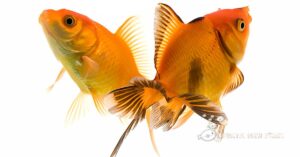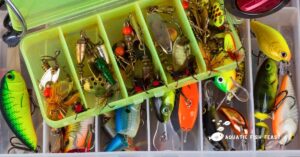Would you want to know what’s fish production? From what I’ve learned, fish production is raising fish for business purposes, like food items, in a certain place.
The primary type of aquaculture is pisciculture, which means raising fish. Other types of aquaculture may be considered mariculture. Fish production means keeping fish for sale in tanks or other structures, usually for food.
It’s the same for fish farms and hatcheries: they can hold 500,000 or more fish. On the other hand, a fish hatchery only raises fish until they are very young.
Then, they are returned to the wild, generally to increase the number of that species. On the other hand, a fish farm is meant to keep the fish until they reach the appropriate size and age for sale.
Ultimately, the fish are caught and sold as whole or cooked food. But that’s not all. As you read, I’ll tell you more about fish creation.
Now, let’s get started.
Table of Contents
What is fish production
Fish production is known as the commercial rearing of fish in captivity to kill and sell them for human consumption.
Fish raised on farms are usually kept in cramped, artificial environments in vast quantities, with little regard for their welfare.
Although capture fishing, or taking fish straight from the wild, is not the same as fish farming, both sectors of the economy have ethical and environmental issues.
Fish has excellent nutritional value and is a highly high-protein food. Fish catching was once necessary for fish production.
But almost none of the fish caught were eaten by humans; instead, they were employed in industrial settings.
Because of this, a different strategy for raising fish output was developed, which involves raising aquatic creatures that are significant to the economy. We call this aquaculture.
What are the 3 types of fish production?
Although nearly every fish farm is a factory farm, there are differences in the technologies used to confine the fish.
1. Systems of Cages
Fish are raised commercially in extremely productive cage culture techniques, keeping large groups outside in closely spaced underwater containers.
The enclosures, sometimes called cages, are tethered down or float and utilize pre-existing surface water regions like rivers or lakes.
Most cage systems are open, allowing water to flow freely. At the same time, the fish are imprisoned, permitting any poisons or agricultural waste to escape into the surrounding area uncontrollably.
2. Pond or Irrigation Ditch Systems
Fish grown in these systems are housed in a closed aquatic environment.
Fish are kept in self-sustaining enclosures, ponds where food can be planted for the fish to consume, or irrigation ditches where their waste products may be utilized as crop fertilizer.
3. Systems of Integrated Recycling
Fish kept in integrated recycling systems, commonly called aquaponics, are housed in plastic tanks inside greenhouses.
Herbs like parsley and basil are grown in the nutrient-rich effluent from the fish tanks without needing soil.
The plants purify the water by absorbing the nutrients, enabling the fish to use the same water. Regrettably, thanks to these methods, produce produced with fish effluent may also come into contact with E. coli.
What are the Methods of Fish Production
Fish can be produced in two different methods:
1. Water Features
Pond systems are the most ancient means of producing fish, dating back thousands of years. Pond farms comprise earthen pond, ditch, or canal systems with readily diked enclosures made of clay-based soils.
Of course, more advanced techniques may be used in today’s industrial setting. Still, it’s important to remember that pond systems are frequently necessary in poor nations, where a lack of wild fish could harm nutrition.
They are the best option for farmers since they are self-contained and may be used simultaneously for many fish species.
Ponds are productive when managed correctly. It’s really easy to put the wastewater into side pools to be processed or used as fertilizer because they’re located inland or away from bigger bodies of water.
This considerably lessens the harm that pond enclosures do to the surrounding ecosystem.
2. Fishery Culture
This is the regulated rearing of fish in bodies of water. Pisciculture, or fish production, is another name for it. Remember that aquaculture, the scientific breeding and management of all aquatic creatures, includes pisciculture.
Fishing is separated further into:
- Fisheries inland
- Fisheries in the Sea
3. Fisheries Within the Inland
This involves fishing in freshwater environments, including tanks, rivers, lakes, and ponds. Reservoirs where freshwater and saltwater waters converge also form inland fisheries.
Since the output from catch fisheries is often low, pisciculture is used here.
One body of water is home to five or six species. Because of the way these species are chosen, there is no rivalry for food despite their diverse eating preferences.
Rohu, Catla, Grass Carp, Common Carp, and other common types are raised.
4. Fisheries in the Marines
Since the Indian landmass is a peninsula, they are fortunate to enjoy 7517 kilometers of coastline. Thus, 14 million people rely on fishing as their primary source of income.
These 14 million individuals use marine fisheries, or marine waterways, such as the sea and the ocean, to cast their fishing nets.
These are further separated into deep-sea or offshore fisheries, found farther out in the ocean, and coastal fishing, found closer to the coast.
Common varieties include sardines, mackerel, hilsa, tuna, pompfret, mussels, prawns, oysters, etc.
The production can be increased using satellites and echo-sounders to locate colossal fish.
5. The Integrated Recycling System relies on a well-known technique for producing “pure” fish and the idea that there is no waste.
The Integrated Recycling System uses hydroponic beds that are situated next to large plastic tanks housed inside a greenhouse.
It is named “no waste” because the fish feed waste is used to provide nutrients to the plants growing in the hydroponic beds while the tank water is gradually pumped to the hydroponic system.
This technology adapts to nearly every temperate region since it is housed in a greenhouse. Dealing with salty water is an essential consideration to preserve the fish’s electrolyte balance.
Enhancing the productivity of water and related resources is the primary goal of this fish production system, which also aims to improve the output of edible fish.
The main advantages of this system are a reduction in the amount of trash produced by all industrial processes and more ecologically friendly production methods.
What are the Benefits of Fish Production
This little article will pique your curiosity in fish farming by highlighting ten incredible advantages of the industry.
1. Consistent demand and supply
Fish is one of the best sources of protein, and Nigerians eat it on a very significant basis.
This indicates a consistent demand for this product throughout the year, and as fish develop quickly, there will always be a supply.
Over time, investing in fish production will yield a sizable and consistent cash stream.
2. The best option for customers
Fish sells more quickly since it is cheaper than most beef items. It is a lucrative business because it continues to be the most affordable option for customers.
3. Consistent Growth Trend
Fish have a rapid and straightforward growth plan. Farmers may also accelerate the fish’s growth process by feeding fish-specific diets that promote growth.
Because of this fish feature, farmers can harvest and sell their produce quickly.
4. Generous Income
Farmers may make much money from fish farming if they plan and manage it effectively. In only six months, one might make up to $1,884.17 in profit with just $1,256.03 in cash or investment.
5. Fish farming only needs a little equipment; all you need to start fish farming is a modest concrete tank.
6. To improve their nutritional value, fish raised in aquaculture are supervised as they grow. As a result, these fish are of a higher calibre than those found in the wild.
7. an extensive range of fish are suited for production. As a result, the fishery owners may choose the species of fish that will yield the most profits.
8. People can turn unproductive, impoverished land plots into profitable fish ponds.
Can fish production be better
There is much more the fish-producing business might be doing to help safeguard the environment and lessen the suffering of animals.
However, fish production ultimately depends on the death of sentient creatures that desire to survive, just like any other method of growing animals for sustenance. That makes it intrinsically dangerous.
Aquaculture, or fish production, may provide a more environmentally friendly method.
Numerous companies, such as Mowi, cultivate in ocean waters without causing harm to wild fish populations or using the unsustainable techniques frequently used in ocean fishing.
However, the sector has also faced criticism, most notably from seaspiracy.
Why do we study fish production
Studying fish could lead to developing new or improved industries, thereby significantly increasing society’s resources.
It could also shed light on issues related to development, animal distribution, and evolution and raise public awareness of a group of animals that are second only to domestic animals in importance and, when considered about their environment, unparalleled in beauty and aesthetic appeal.
The goal of studying fishery is to transfer theoretical and practical information about raising, reproducing, and harvesting fish.
Getting a degree in Fishery Studies is an excellent approach to working towards a fulfilling profession while pursuing your interest in aquaculture.
Final thought
Now that we have established What is fish production, Fish production damages the ecosystem and results in the suffering of billions of individual animals despite the fact that it is frequently perceived as superior to the production of meat and dairy products.
Choosing plant-based substitutes for traditional fish products can create a future in which all salmon, catfish, carp, and tilapia are free to roam the wild and live as they should.
Fish may be simple to manage and care for if you have the correct information, experience, and resources.
Fish farming is unquestionably one of the most profitable agricultural industries. Fish production may easily lead to tremendous success with the right business strategy, resources, and knowledge.
Other Articles:
Difference Between Fish Farming And Fishery
What Is The Difference Between Fish Feed And Fish Meal
How To Attract Fish When Fishing With Bait
How Much Fish Food To Cycle A Tank
How Often Do Fish Mate
How Much Fish Food Per Day
When And How Clownfish Lay Their Eggs




